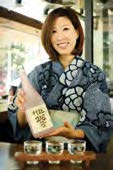Tokyo Jizake Strolling (Shibamata Taishakuten)
By Ryuji Takahashi
I visited Shibamata Taishakuten Nichiren-shu Buddhist Temple early in the New Year. It’s been thirty years since I moved to Tokyo, yet I’ve never visited the temple once. Since I’ve never seen the film series, “It’s Tough Being a Man,” I was convinced I had no reason to visit. I was proven wrong however. Shibamata Taishakuten is a reputable Nichiren Buddhist Temple built by two monks during the Edo Period (1603-1868) in 1629 (the current building was built after the Meiji Period (1868-1912)). The official temple name is “Hyoei-zan Daikyoji,” yet often referred to locally as “Taishakuten.”
The temple is mentioned in literary works such as “To the Spring Equinox and Beyond” by author Soseki Natsume. More recently, the temple is most renowned due to the Japanese film series, “It’s Tough Being a Man.” Therefore, a statue of the main character, Tora-san, stands in front of the Shibamata Station. I rode the train to the Keisei-takasago Station and took the Keisei Kanamachi Line to the Shibamata Station. Since the wait time to switch trains was fifteen minutes, and the walking distance from Keisei-takasago Station was also fifteen minutes, I started walking towards Shibamata Station.
The pathway to the shrine starts in front of the station. Passengers deboarded the train and immediately started taking photos standing next to the statue of Tora-san. Several restaurants stood in front of the railroad station. It seemed many restaurants served yakisoba, perhaps a local specialty. Walking on the bustling pathway to the shrine, I encountered many pedestrians with skewered mugwort dumplings and sweet sake in hand as they passed by. I regretted not visiting this bustling pathway to the shrine for the past thirty years.
A newcomer to Taishakuten, I eyed the restaurant Freshwater Fish Cuisine, where a long line of guests stood at the front waiting for the eatery to open, and the rice cracker shop, as I passed by without stopping. I thought to first visit the shrine and headed towards Taishaku-do, where a long line of worshippers stood at the Nitenmon entrance. Surprisingly, I quickly reached the front of the Taishakuten and visited the shrine. I drew a fortune slip before returning to the pathway to the shrine just after noon. More visitors have come since I arrived, and the pathway to the shrine was bustling more than before.
Long lines formed in front of shops selling skewered mugwort dumplings and rice crackers. Since I came a long way to Shibamata, I bought mugwort dumplings at the shop “Toraya” on my way back to the railroad station. I ate as I strolled until I entered the izakaya restaurant “Haru,” once featured on a TV program that explores pubs. I saw no local patrons inside, perhaps due to soaring prices around the New Year that targets tourists. At first, I was the only customer, which made me nervous. However, groups came in afterwards and the restaurant was soon packed to capacity.
Afterwards, I strolled along the railroad tracks towards Keisei Kanamachi Station in the opposite direction from where I came, enjoying the chilly breeze along the way to sober up. I enjoyed another drink at the Kanamachi Station and headed to Nippori Station, where I enjoyed hot sake at a standing bar in the Yanaka Ginza shopping district before I returned home. I realized during this visit that I should visit other renowned hot spots in Tokyo, a great start to the new year.
東京地酒散歩(柴又帝釈天)
年明けに柴又帝釈天に行ってきた。東京に住み始めて30年になるが、一度も行ったことが無く、何故か映画「男はつらいよ」シリーズを観てもいないのに行く場所ではないと勝手に思い込んでいた。しかし、決してそんな場所ではなく、江戸時代初期、寛永6年に2名の僧によって建立されたで由緒ある日連宗寺院である。(現在の建物は明治時代以降に建てられたもの)正式には経栄山題経寺だが、地元では帝釈天と呼ばれることが多い。夏目漱石の「彼岸過迄」など多くの文芸作品に出てくるお寺で、近年では「男はつらいよ」シリーズが一番有名の為、柴又駅前には主人公の寅さん像が設置してある。私は京成高砂駅まで電車で向い、そこから京成金町線で柴又駅まで行く予定だったが、電車乗り換え待ち時間が15分有り、京成高砂駅から歩いても15分とのことだったので、歩いて柴又駅を目指した。駅前からすぐ参道が始まるのだが、電車から降りてきた人々は先ず寅さん像と記念撮影をしていた。駅前には飲食店が数件あり、名物なのか焼きそばを出す店が多いと感じた。そこから賑やかな参道に入ると皆、草団子や甘酒を片手に歩いている風景に出くわす。こんなに参道が賑わい楽しい場所にも拘らず30年来ていなかった事を悔やんだ。開店待ちで行列が出来ている川魚料理店や煎餅屋などを横目に帝釈天新参者の私は寄り道をせず、まずはお参りが先だろうと参拝客が列をなしている帝釈堂を目指す。入口の二天門前から行列が出来ていたが、案外すんなり帝釈堂までたどり着きお参りを済ますことが出来た。そして、おみくじを引いて参道に戻るがちょうどお昼を過ぎたくらいだったので、来た時よりも人が増えていてより一層参道が賑わっていた。草団子屋や煎餅屋なども行列が出来ていたが折角、柴又に来たのだからと駅まで戻る途中の「とらや」で草団子を買い、食べながら歩き、某BS放送の酒場探訪の番組にも出たことがある駅前の居酒屋「春」に入店。どうやらお正月&観光地価格で値段がこの時期は高い為か、地元の人は飲みに来ていない感じで、最初は私以外他の客がいなかった為一瞬不安になったが、のちに団体客などが入り満席になっていった。その後、酔いを覚ます為、冷たい風を浴びながら来た方向とは反対の京成金町駅まで線路沿いを散歩しながら歩き、金町駅でさらに1杯呑み、JRで日暮里まで行き、谷中銀座の角打ちで熱燗を呑み帰宅した。まだ行ったことのない他の東京の有名スポットにも行ってみるべきだなと思わされる良い年始となった。






